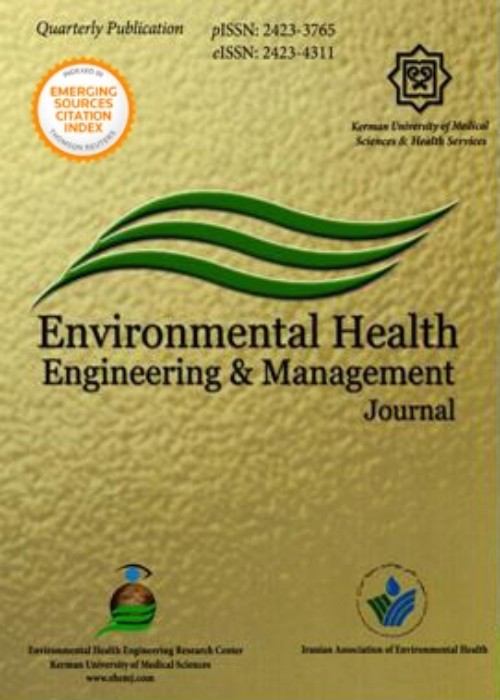An environmentally friendly soil improvement technology for sand and dust storms control
Author(s):
Article Type:
Research/Original Article (دارای رتبه معتبر)
Abstract:
Background
Dust storms occur when unchecked, strong, or turbulent winds combine with exposed loose and dried soil surfaces. Sand and dust storms have a significant impact on society, economy, and environment at local, regional, and global levels. The environmental and health hazards of such storms cannot be permanently reduced, however, by taking appropriate measures, its impact can be reduced. The present study aimed to investigate the effects of microbial precipitation of calcium carbonate (CaCO3) as a biocompatible agent on soil stabilization and control of dust storms using urease-producing bacteria (UPB) as a biological improvement technique, which were isolated, identified, sprayed on the soil surface.
Methods
For this purpose, the erosion of bio-cemented soil samples was investigated experimentally in a wind tunnel under the condition of wind velocity of 0 to 98 km.h-1 in two soil types with sandy and silty texture in a completely randomized design with three replicates.
Results
The investigation of the threshold wind velocity of soil particles showed that soil particles began to move at velocity of 8 and 10 km.h-1 in silty and sandy soils, respectively, but in all biological samples (MICP), particles did not move until the wind speed reached 97 km.h-1. It was also revealed that the weight loss of all MICP-treated samples at different wind velocities was significantly reduced compared to the control group. Differences in the amount of soil loss among bio-cemented samples and control treatments were even superior at higher velocities, so that at velocities more than 57 km.h-1, soil losses increased significantly in the control group, while in soils treated with bacteria, soil loss was very low (about 2.5 kg.m-2.h-1). Comparison of the bacteria used in this study also showed that Bacillus infantis and Paenibacillus sp3 had high efficiency in controlling dust storms.
Conclusion
The formation of abrasion-resistant surface layers on soil samples treated by bio-cementation showed that cementation by biological methods could be an effective way to stabilize surface particles and control sand and dust storms.Keywords:
Language:
English
Published:
Environmental Health Engineering and Management Journal, Volume:6 Issue: 1, Winter 2019
Pages:
63 to 71
magiran.com/p1954731
دانلود و مطالعه متن این مقاله با یکی از روشهای زیر امکان پذیر است:
اشتراک شخصی
با عضویت و پرداخت آنلاین حق اشتراک یکساله به مبلغ 1,390,000ريال میتوانید 70 عنوان مطلب دانلود کنید!
اشتراک سازمانی
به کتابخانه دانشگاه یا محل کار خود پیشنهاد کنید تا اشتراک سازمانی این پایگاه را برای دسترسی نامحدود همه کاربران به متن مطالب تهیه نمایند!
توجه!
- حق عضویت دریافتی صرف حمایت از نشریات عضو و نگهداری، تکمیل و توسعه مگیران میشود.
- پرداخت حق اشتراک و دانلود مقالات اجازه بازنشر آن در سایر رسانههای چاپی و دیجیتال را به کاربر نمیدهد.
In order to view content subscription is required
Personal subscription
Subscribe magiran.com for 70 € euros via PayPal and download 70 articles during a year.
Organization subscription
Please contact us to subscribe your university or library for unlimited access!


